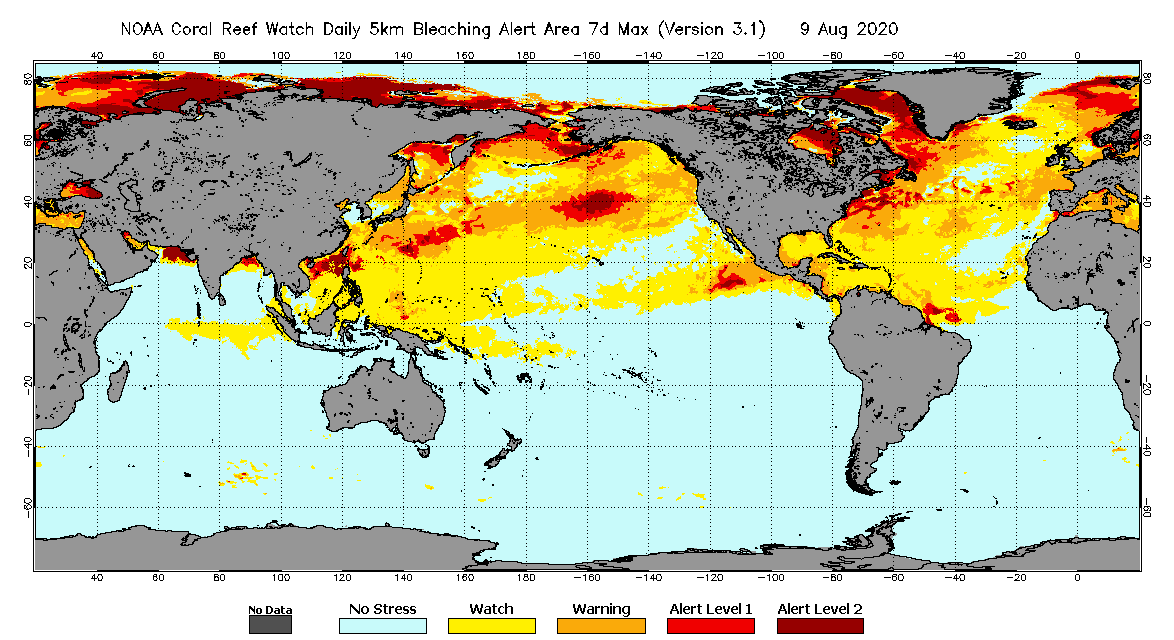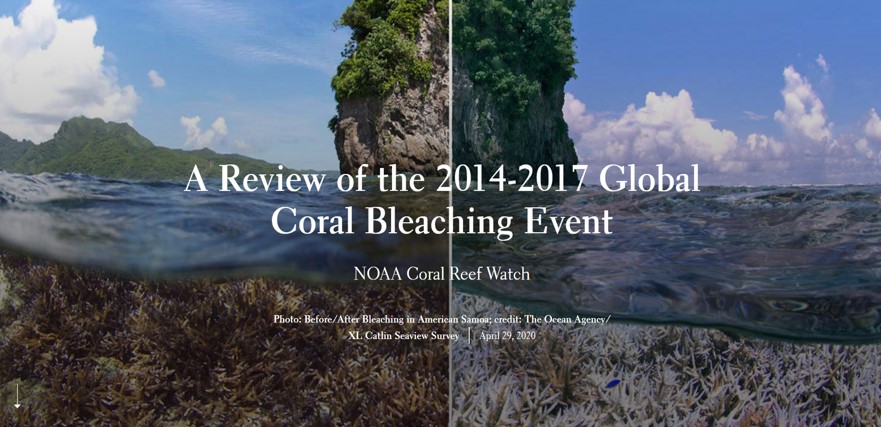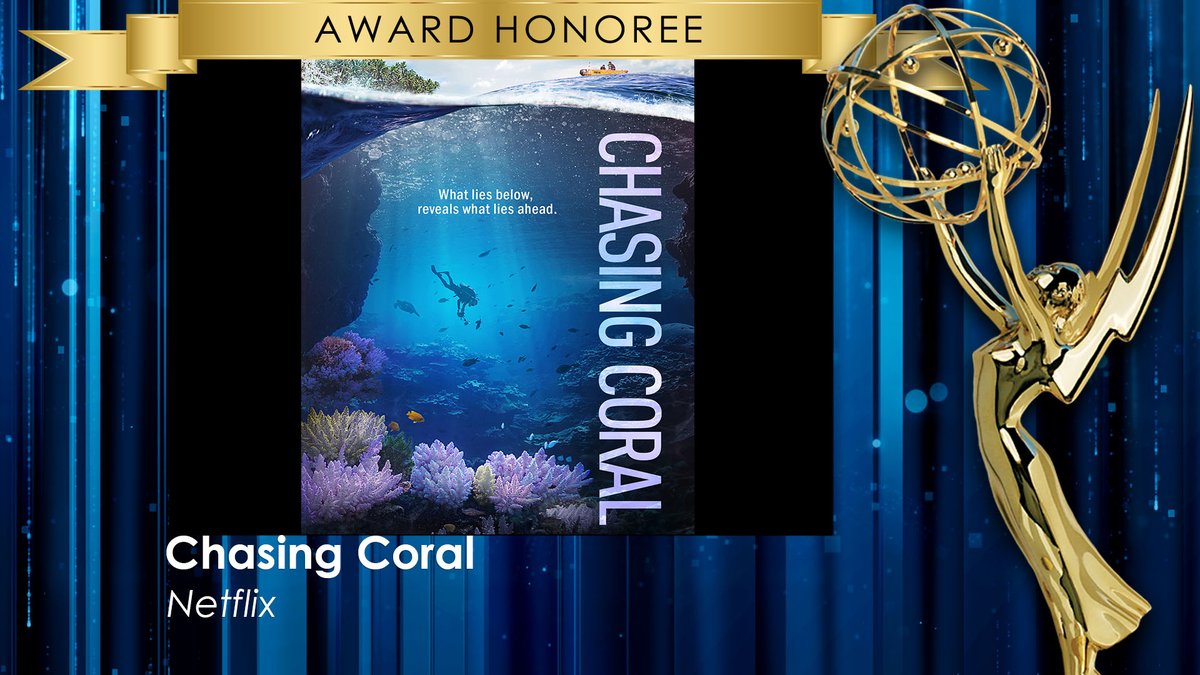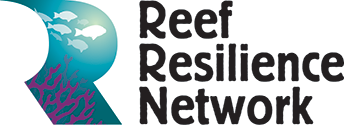 |
Instructive tutorial, produced by NOAA Coral Reef Watch (CRW) that introduces users to coral reefs, coral bleaching, satellite remote sensing of the marine environment, and NOAA CRW's daily global and regional 5km-resolution satellite coral bleaching heat stress monitoring products. These 5km satellite products now form the core of CRW's decision support system for coral reef management. They are highly used by the U.S. and international coral reef communities to pinpoint and monitor areas around the world, where corals are at risk for heat stress-driven bleaching and other associated climate change impacts. Audience: educators, students (predominantly middle-school and beyond) |
 |
Instructive tutorial, produced by NOAA's National Ocean Service that provides an overview of the biology of corals and coral reefs; threats to their health, especially from "bleaching"; and NOAA efforts to help conserve and protect coral reefs worldwide. Audience: general public |
 |
Story map about the 2014-2017 global bleaching event and NOAA Coral Reef Watch's work to predict, remotely monitor in near real-time, document, and communicate with stakeholders about this devastating event. Audience: general public |
 |
Winner of Outstanding Nature Documentary at the 39th Annual News and Documentary Emmy Awards, and the US Documentary Audience Award at the 2017 Sundance Film Festival, this film follows divers, scientists, and photographers around the world as they mount an epic underwater campaign to document the disappearance of coral reefs. Featuring NOAA Coral Reef Watch satellite and modeled products and the former Coral Reef Watch coordinator, C. Mark Eakin, as one of the two chief scientific advisers on the film. Audience: general public |
|
|
Links to several, in-water coral reef monitoring programs (and protocols) for identifying, documenting, and measuring the extent and severity of coral bleaching in the field. Audience: coral reef ecosystem managers, general public |
|
|
Video series highlighting the importance of coral reef ecosystems, the threats they face, and what we can and are doing to help them make a comeback. Audience: elementary- to high-school students, general public |
|
|
Online video describing coral bleaching, what NOAA is doing to monitor and prevent bleaching, and what you can do to help. Audience: elementary- to high-school students, general public **Click here to access NOAA's Science on a Sphere Coral Bleaching Datasets.** |
 |
NOAA website providing teaching resources to help students analyze NOAA satellite data and investigate a major consequence of rising sea surface temperature on coral reefs -- coral bleaching. Audience: elementary- to high-school students |
|
|
Lesson plans focused on satellite technology, coral biology, and coral reef conservation. Fun, hands-on science activities engage students in learning. Audience: 4th-6th grade students |
|
|
Hands-on exercise (using the original, heritage twice-weekly global 50km coral bleaching heat stress products), based on the record-breaking 2005 coral bleaching event in the Caribbean region. Audience: middle- and high-school students English: Exercise (PDF, 400KB) Answers (PDF, 25KB) Español: Ejercico (PDF, 400KB) Respuestas (PDF, 29KB) |
 |
Information on the causes and consequences of coral bleaching, and management strategies to help local and regional reef managers reduce this threat to coral reef ecosystems. Audience: coral reef ecosystem managers and other stakeholders |
|
|
A list of actions and resources to help managers and other coral reef stakeholders prepare for and respond to mass bleaching events. Audience: coral reef ecosystem managers and other stakeholders |
|
|
An effort to consolidate the information and resources on coral bleaching and what dive operators, managers, and stakeholders can do before, during, and after a bleaching event. Audience: coral reef ecosystem managers and other stakeholders |
 |
This comprehensive resource provides guidance on how the diving and snorkeling industry - frontline guardians of coral reefs, can play a pivotal role in managing and monitoring the impacts of coral bleaching. Audience: recreational scuba divers and snorkelers |
|
|
Mission: Iconic Reefs Iconic Reef Guardians - Recreational Diver Coral Bleaching course Iconic Reef Guardians' Audience: recreational scuba divers and snorkelers |
|
|
An online course, with a practical focus, offered by The University of Queensland (Australia) that provides an introduction to the science, ecological value, threats, and conservation strategies of tropical coral reef ecosystems. Audience: general public |
 |
An online course offered by The Nature Conservancy's Reef Resilience Network that is designed to provide a core understanding of how to build resilience into management; it also introduces learners to a process that provides guidance on developing a resilience strategy at the local scale. This course is offered in English, Bahasa Indonesia, French, and Spanish. Audience: coral reef ecosystem managers |
|
|
Resources from an international series of workshops on helping coral reefs adapt to climate change. Audience: coral reef ecosystem managers and other stakeholders |
 |
2006 comic strip about climate change, coral bleaching, and the NOAA Coral Reef Watch satellite monitoring program. |